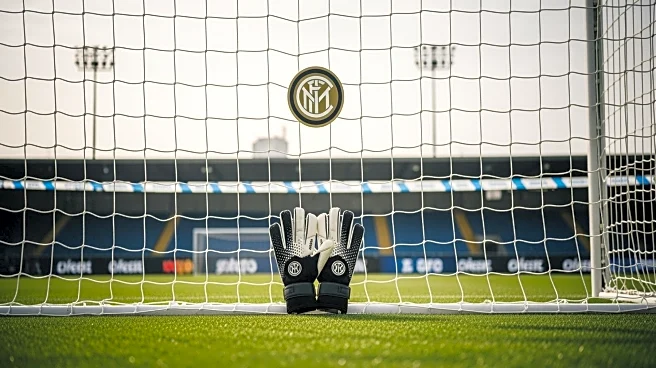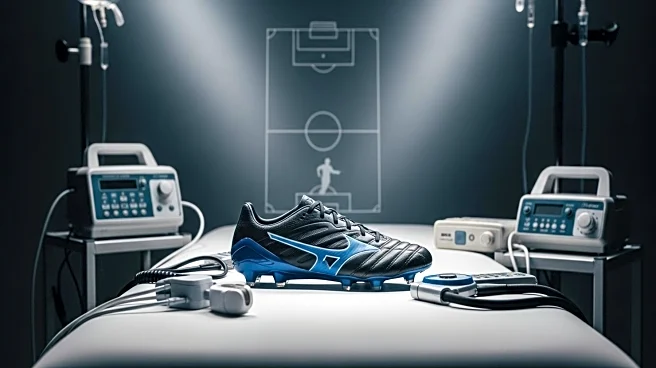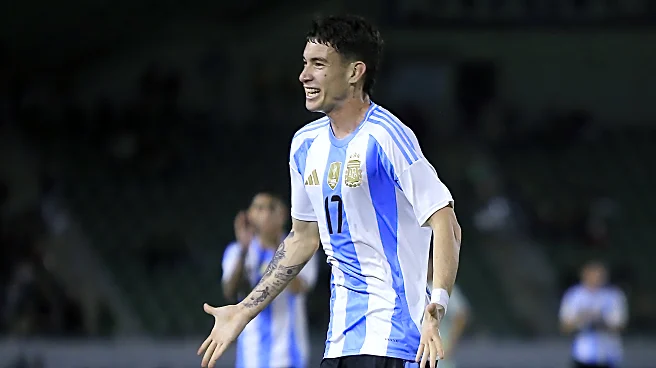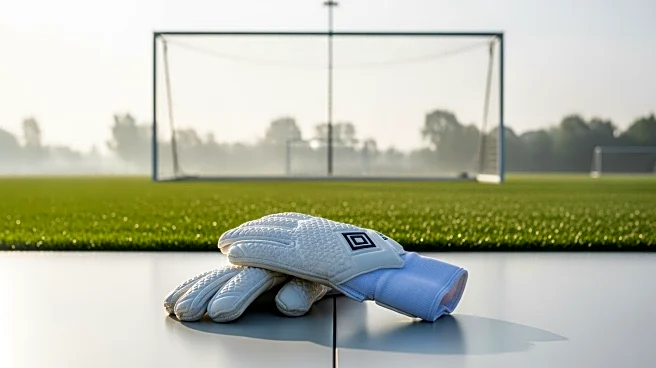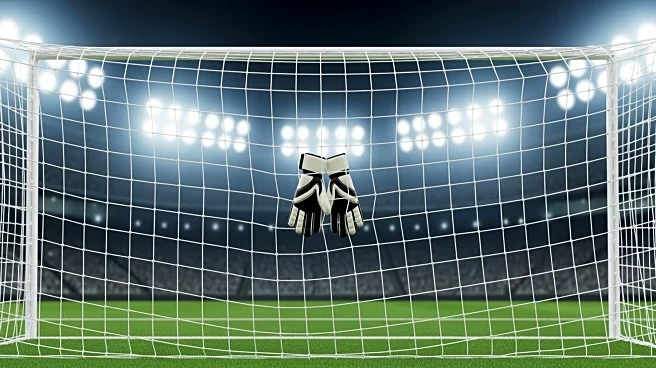What's Happening?
Inter Milan's youth academy has produced another promising talent, Henrikas Adomavicius, a 16-year-old Lithuanian goalkeeper. Known as 'the child giant' due to his 198 cm stature, Adomavicius has been training with the senior squad and has impressed with his technical
skills and maturity. Despite not being part of the squad for an upcoming trip to Roma, his continued presence with the first team suggests a bright future. Adomavicius joined the Inter academy under Massimo Tarantino at the start of 2025 and has quickly advanced from the U16s to the U18s, where he has made four starts in six matches. His performance has also earned him a call-up to the Lithuania U17 team.
Why It's Important?
The rapid rise of Henrikas Adomavicius highlights the strength of Inter Milan's youth development program, which continues to produce high-caliber players capable of advancing to senior levels. For Inter Milan, nurturing such talents is crucial for maintaining competitive advantage and ensuring a steady influx of skilled players into their senior team. This development is significant for the club's long-term strategy and could influence their performance in domestic and international competitions. Additionally, Adomavicius's progress could inspire other young athletes, emphasizing the importance of youth academies in professional sports.
What's Next?
As Adomavicius continues to train with the senior squad, his potential inclusion in future matches could be a possibility, depending on his development and the team's needs. His progress will be closely monitored by the club's management and coaching staff, who may consider him for more significant roles if he continues to impress. This could also lead to increased attention from other clubs, potentially impacting his career trajectory and market value.
Beyond the Headlines
The success of players like Adomavicius underscores the importance of investing in youth development programs. It raises questions about the balance between nurturing homegrown talent and acquiring established players from the transfer market. This trend could lead to a shift in how clubs allocate resources and prioritize player development, potentially influencing the broader landscape of professional soccer.
